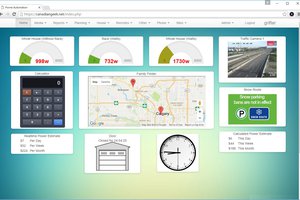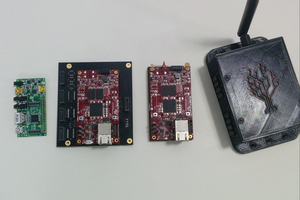No solution exists to transport the requested book directly to the subscriber and get it issued. To allow this I propose to make a line follower ground robot that receives voice input from the subscriber about a particular book or journal, looks for it in the database, goes to the respective shelf, looks for the book, sanitises it and issues it.
The information about the transaction is uploaded to the AWS cloud through a centrally placed gateway eliminating the need of a librarian. A webservice would then get this data from the AWS DynamoDB to keep library staff informed and also integrate with a mobile app to notify users about dues and other notifications.
The benefits are as follows -
- It would help control spread of virus through books
- Remove need of a librarian
- Eliminate unnecessary stigma against visiting libraries
- Create a secure cloud management database
IMPLEMENTATION
The main controller for the bot would be the PSoC 6 Pioneer kit that would take input from an IR LED array that follows a black or white line marked with tape on the library floor. It would also drive a rear wheeled differential drive. An SD Card module interfaced with the board would serve as a central database for location of books. AWS FreeRTOS would be run on the Pioneer board for a true real-time solution.
Requests would be made through the app, which the webservice would process. If the book is available instructs the bot to fetch it. It would follow lines to get to the exact shelf and use an RFID scanner module to look for the book.
An arm displaces the book from the shelf that falls into a basket on the bot`s base. The book is sanitised by a simple spray mechanism and then delivered to a delivery point.
Issuing of the book would also be done using RFID tags and the transaction stored in the cloud on AWS IoT Core. The library staff may at any time seek records and override certain automated functions in real-time.
Instructions for the subscriber would be given on the screen along with the facility of voice input for further instructions, thus creating a safe, zero-contact interface.
Hardware
- PSoC 6 WiFi/BT Pioneer kit
- Chassis
- Geared DC motors
- Motor Driver module
- Bottle with Sanitiser
- Ultrasonic Sensor
- RFID tags and reader module
- IR array
- Servo Motors
- Pushing arms
- Basket
- microSD card and module
The reason for choosing the Pioneer kit over the Prototyping kit is the availability of a screen that helps provide easy interaction with the user and the microphone and speakers that serve as voice I/O ports. The extra processing power of the Prototyping kit is simply not needed in this application. Also, the form factor of the Pioneer kit is smaller.
Software
- NodeRed
- WICED Studio
- AWS IoT
- MIT App Inventor 2
My BACKGROUND
I am pursuing a Masters degree at an engineering college in India. I have completed many IoT projects in the past based on home automation. I am an experienced FPGA developer and would love to contribute to the community here on Hackaday.
I am familiar with many MCUs like Atmega, Renesas, MicroChip, NRF etc. I have experience making projects based on BLE and WiFi and would love to expand my portfolio to Lora also.
I spend most of my time doing research projects based on control systems at college. Alongwith that I participate in competitions like these. I am new to Hackaday but am quite active on some other communities

 Vojtech Pavlovsky
Vojtech Pavlovsky

 Redtree Robotics
Redtree Robotics